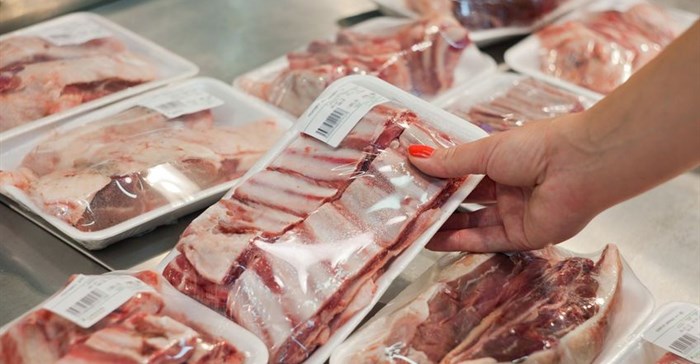The enigmatic listeria bacteria, which has killed more than 80 people since the beginning of 2017, has wormed its way into news headlines across South Africa. Little is known as to what the source of the outbreak is, and role-players in the food safety industry must now be extra vigilant in order to keep the culprit under control.

©Pavel Ilyukhin via
123RFThe outbreak has raised a few questions, such as if there are proper systems and protocol in place to ensure food safety in South Africa?
According to Linda Jackson of the food compliance company, Food Focus, the Department of Health and the Department of Agriculture, Forestry and Fisheries are responsible for the safety of the consumer’s food. They do this by means of legislation that governs what may and may not be in food, including agricultural inputs. In addition, they have requirements for food handling facilities.
Jackson says the departments first inspect facilities and then grant certificates required to trade. They should routinely test products to confirm that they comply with the legislation. The Department of Health is also responsible for port control, as imported food must comply with South African legislation as well.
Requirements for abattoirs and dairies
There are special legal requirements for abattoirs and dairies. According to the general manager of the Red Meat Abattoir Association, Dr Gerhard Neethling, the outbreak of listeria highlights the responsibility of the red meat industry to provide proper and improved hygiene during the production, processing, packing and preparation of red meat and red meat products.
During the processing of livestock at the abattoir, particular attention is given to slaughter procedures, personnel hygiene and sterilisation of equipment to minimise bacterial contamination during this process. Furthermore, inspection of each animal and carcass ensures the health of the animal and meat and removal of any possible contamination that might have occurred.
Microbiological testing of water, products, contact surfaces and hands is a prerequisite at any registered abattoir in terms of the Meat Safety Act, 2000 (Act 40 of 2000) and supporting regulations. According to the hygiene management system recorded in this act, the owner of an abattoir must provide the provincial executive officer with a documented Hygiene Management System.
This system must contain detailed information on control measures or programmes required to monitor identified control points, including the methods of monitoring or checking these control points; provide relevant records of observations, checks, measurements or results; provide sampling programmes for laboratory analyses, as well as names of laboratories to do the required analyses; provide written accounts of decisions relating to corrective actions when taken; and assess the hygiene status of the abattoir by means of the Hygiene Assessment System, and provide results to the provincial executive officer for verification as frequently as he or she may require.
Requirements for registration of red meat abattoirs, hygiene management and evaluation systems remain the same for all registered abattoirs in South Africa. Therefore, provision has been made in terms of systems and protocol for smaller independent abattoirs on farms.
Neethling mentions that the Meat Inspection Scheme, which was announced in July 2017, also puts an extra guarantee on food safety for consumers. The implementation of this system means that meat inspections will now be done independently in both the private and public sectors.
Safety on shelves
Jackson claims that in addition to this legal framework, South Africa has self-regulatory schemes, which have been put in place by the national retailers to ensure food sold on their shelves and under their house brands is safe for the consumer.
“They do this by using audits of their suppliers and testing products for safety and quality. They may instruct suppliers to withdraw their products from the shelves if they don’t comply. If you want to supply the retailers, you must adhere to these requirements. The retail stores are also audited. Many of the fast food outlets and restaurant chains use a similar system to the retailers,” she says.
She says, however, that smaller retailers and informal traders do not participate in these schemes. “Here we are totally dependent on the environmental health practitioners at the local municipality. These departments are understaffed and have several public health responsibilities, not just food. They are also required to send samples for testing that may or may not be happening in the most effective way.”
According to Jackson a full review of the national testing facilities is necessary.
No gaps in the system?
The question then arises: How do outbreaks such as these still occur? Role-players across various platforms agree that there is always an element of risk. Jackson emphasises that although there are systems in place, listeria is a living organism and is therefore hard to control. “We must bear in mind that there are currently no regulations which govern the levels of listeria that may be present in our food.”
The working hypothesis of the National Institute for Communicable Diseases is that this outbreak originated from either a single product or a facility that produces many products, which may have been contaminated. Not all products are tested with the same level of thoroughness, as it is up to the manufacturer to decide what they test, when they test and even how they test.
Experts say another factor complicating the spread of the bacteria is that it can grow in the fridge. Even though a product with very low levels is released into the market, the organism can still multiply to a level that can cause illness if the consumer does not comply with the shelf life labelling.
What makes these bacteria extra challenging is the fact that the incubation period of the disease can be up to 31 days, which makes it basically impossible for the patient to remember what they ate, and for authorities to know which food to test to determine the source of the outbreak.



































